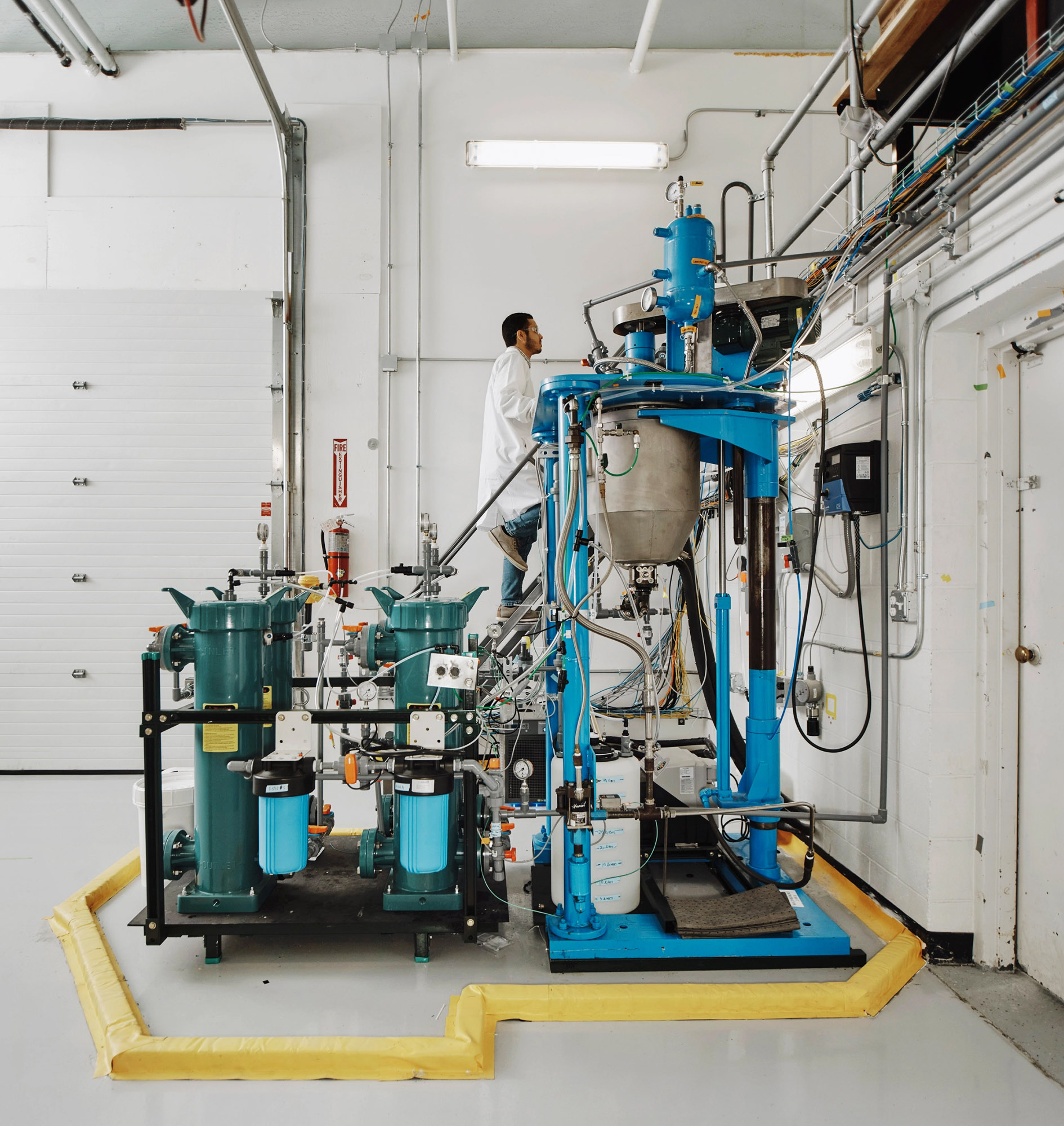To be on track for net-zero goals, the cement industry would need to add carbon capture facilities to between 33 and 45 existing cement plants by 2030, according to RMI. The first such industrial-scale facility at a cement plant is scheduled to come online this year.
This could be expensive: a carbon capture system could cost as much as $120 per metric ton of carbon dioxide removed, which Ellis says would roughly double the final cost of cement at current prices.
The cost is one reason Sublime and a number of other startups are eschewing carbon capture and aiming to cut cement’s carbon footprint using more radical formulas.
One of the other best-funded cement startups is Brimstone, a California-based group with what it calls a carbon-negative process for making cement. This means that the product ends up pulling more carbon dioxide out of the atmosphere than it emits, says Cody Finke, Brimstone’s CEO.

BOB O’CONNOR
This works in two major ways. First, rather than limestone, Brimstone uses other minerals called silicates that don’t contain carbon dioxide, so there are no process emissions from the company’s cement, says Finke. In addition, a waste product of the silicates is a magnesium-containing material that acts like a sponge, soaking up carbon dioxide from the air and mineralizing it.
There are still emissions associated with making Brimstone’s cement, largely related to the heat required. But they can be effectively canceled out with the mineral process, Finke explains, especially since the company plans to use electric kilns. If those are powered by electricity from the average US power grid, the startup claims, its material would wind up removing more carbon dioxide than it produces—about 130 kilograms more per ton of cement.
The reason Brimstone is sticking to this high-temperature process, despite its associated energy needs and emissions, is that it’s producing a cement with a chemical formula that dominates the industry today. Portland cement, which has been around since the early 1800s, is likely what you think of when you think of cement. It is known for producing predictable and strong concrete. However, there’s a catch: making it necessitates ultra-high heat, because a key ingredient of the cement—alite—can only form at temperatures over 1,250 °C.
“A cement startup is probably one of the most difficult ones you can imagine. Not only is it technically difficult, but it’s very capital intensive … And it’s not sexy.”
Leah Ellis, Sublime’s cofounder and CEO
Originally, Sublime planned to make Portland cement as well. “For something as low-cost as cement, we thought you’d need to produce what the market is used to using,” Chiang says. But the temperature requirements pushed Sublime to reconsider as it began making its product at larger scales: “There was this 200-year-old invention that we were inventing around.”
